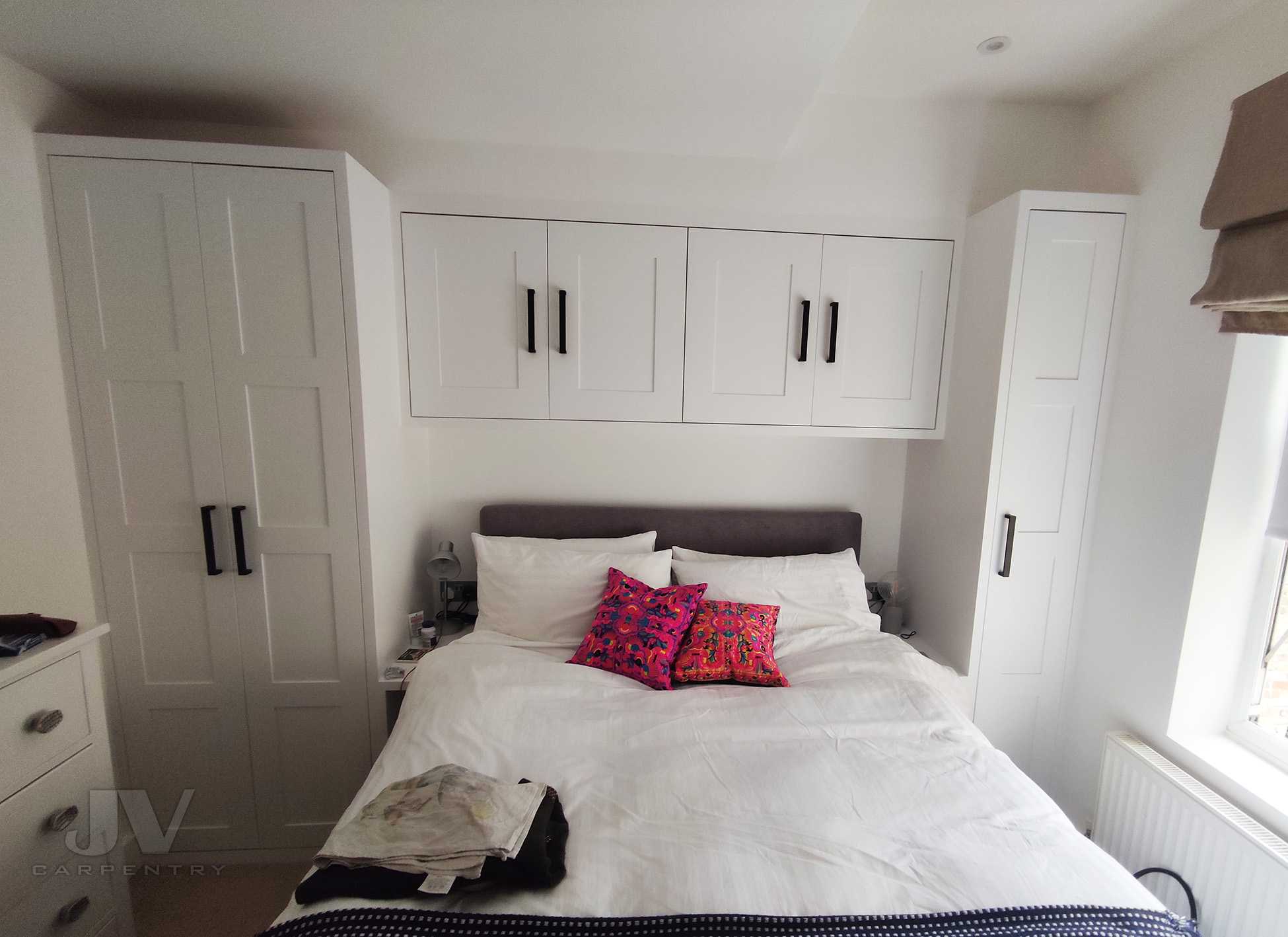Design Ideas for Small Bedroom Built-in Cabinets: Small Bedroom Built In Cabinet Design

Built-in cabinets are an excellent way to maximize space and create a stylish and functional bedroom, especially in small spaces. They offer a tailored solution to your storage needs, seamlessly blending with the room’s design. By incorporating creative design elements and smart features, you can transform your small bedroom into a haven of organization and visual appeal.
Design Styles for Small Bedroom Built-in Cabinets
Exploring different design styles allows you to personalize your built-in cabinets and create a cohesive look with your bedroom’s overall aesthetic.
- Contemporary: Characterized by clean lines, minimalist details, and a focus on functionality. Contemporary cabinets often feature sleek, flush-mounted doors with integrated handles and neutral color palettes.
- Traditional: Embrace classic elegance with traditional built-in cabinets. These designs often incorporate intricate details like crown molding, raised panel doors, and warm wood finishes.
- Minimalist: Ideal for those who prefer a clean and uncluttered look, minimalist cabinets are characterized by simple lines, open shelving, and a focus on functionality. They often use neutral colors and materials like wood or metal.
- Eclectic: Combine elements from different styles to create a unique and personalized look. Eclectic built-in cabinets can feature a mix of materials, colors, and textures, reflecting your individual taste and style.
Incorporating Unique Features
Adding unique features to your built-in cabinets can enhance their functionality and aesthetics.
- Hidden Compartments: These can be used to store items you don’t want on display, like extra bedding, seasonal clothes, or personal belongings. You can create hidden compartments behind false panels or within the cabinet’s structure.
- Sliding Doors: Space-saving and stylish, sliding doors can be used for cabinets that are located in tight spaces or near a bed. They eliminate the need for swing space, making them ideal for small bedrooms.
- Integrated Lighting: Enhance the visual appeal and functionality of your built-in cabinets with integrated lighting. You can install LED strips inside the cabinet or use recessed lighting above the cabinet to illuminate the contents.
Cabinet Configurations for Small Bedroom Layouts
The configuration of your built-in cabinets should complement your small bedroom layout, considering factors like bed placement, window placement, and available space.
| Layout | Cabinet Configuration | Description |
|---|---|---|
| Bed Against a Wall | Full-length cabinet along the wall behind the bed | Provides ample storage and can serve as a headboard or nightstand. |
| Bed in a Corner | Corner cabinet with shelves and drawers | Maximizes corner space and provides storage for clothes, books, or other items. |
| Window Wall | Built-in cabinets with shelves and drawers below the window | Offers storage solutions while maximizing natural light. |
Practical Considerations for Built-in Cabinet Design

Building in cabinets in a small bedroom can maximize space and create a more organized and visually appealing environment. However, realizing this vision requires careful planning and execution. The success of a built-in cabinet project hinges on meticulous attention to detail, including proper planning, material selection, and choosing the right contractor.
Importance of Planning and Measurements, Small bedroom built in cabinet design
Accurate planning and measurements are paramount to ensure the built-in cabinet fits seamlessly into the space and functions optimally. A well-planned design anticipates potential challenges and avoids costly mistakes during installation.
- Detailed Drawings: Create detailed drawings of the proposed cabinet layout, including dimensions, material specifications, and desired features. These drawings serve as a blueprint for the project, ensuring that all parties involved have a clear understanding of the design.
- Precise Measurements: Take accurate measurements of the available space, including wall dimensions, ceiling height, and any existing fixtures or obstructions. Accurate measurements are crucial for a perfect fit and prevent potential problems during installation.
- Consider Functionality: Plan for the intended use of the built-in cabinet. Determine what items will be stored and how they will be accessed. For example, a tall cabinet might require shelves or drawers at different heights to accommodate various items.
- Electrical and Plumbing: Consider the location of electrical outlets and plumbing fixtures. Ensure that the cabinet design allows for easy access to these utilities.
Benefits of Using High-Quality Materials and Craftsmanship
Investing in high-quality materials and craftsmanship is essential for ensuring the longevity and durability of the built-in cabinet.
- Longevity: High-quality materials, such as solid wood or plywood, are more resistant to wear and tear and will last for years. They also offer better sound insulation and stability.
- Durability: Well-crafted cabinets are less likely to sag or warp over time, ensuring their functionality and aesthetic appeal remain intact. Strong hinges, drawer slides, and hardware contribute to a cabinet’s overall durability.
- Appearance: High-quality materials and finishes enhance the visual appeal of the built-in cabinet. A well-crafted cabinet can become a focal point in the room, adding to its overall aesthetic.
Choosing a Contractor or Cabinet Maker
Selecting the right contractor or cabinet maker is crucial for a successful project. Their experience, expertise, and communication skills directly impact the quality and functionality of the built-in cabinet.
- Experience: Choose a contractor or cabinet maker with experience in designing and installing built-in cabinets. Their expertise ensures a well-executed project that meets your specific requirements.
- Portfolio: Review their previous work to assess their design aesthetic, craftsmanship, and attention to detail. A strong portfolio showcases their capabilities and provides confidence in their ability to deliver a quality product.
- Communication: Choose a contractor or cabinet maker who communicates effectively and clearly. They should be responsive to your questions and concerns, ensuring a smooth and transparent project.
- References: Request references from previous clients to gauge their satisfaction with the contractor’s work and professionalism. Positive feedback from past clients provides valuable insight into the contractor’s reliability and workmanship.
- Warranty: Inquire about the warranty offered on the materials and labor. A comprehensive warranty provides peace of mind and protects your investment in the built-in cabinet.
